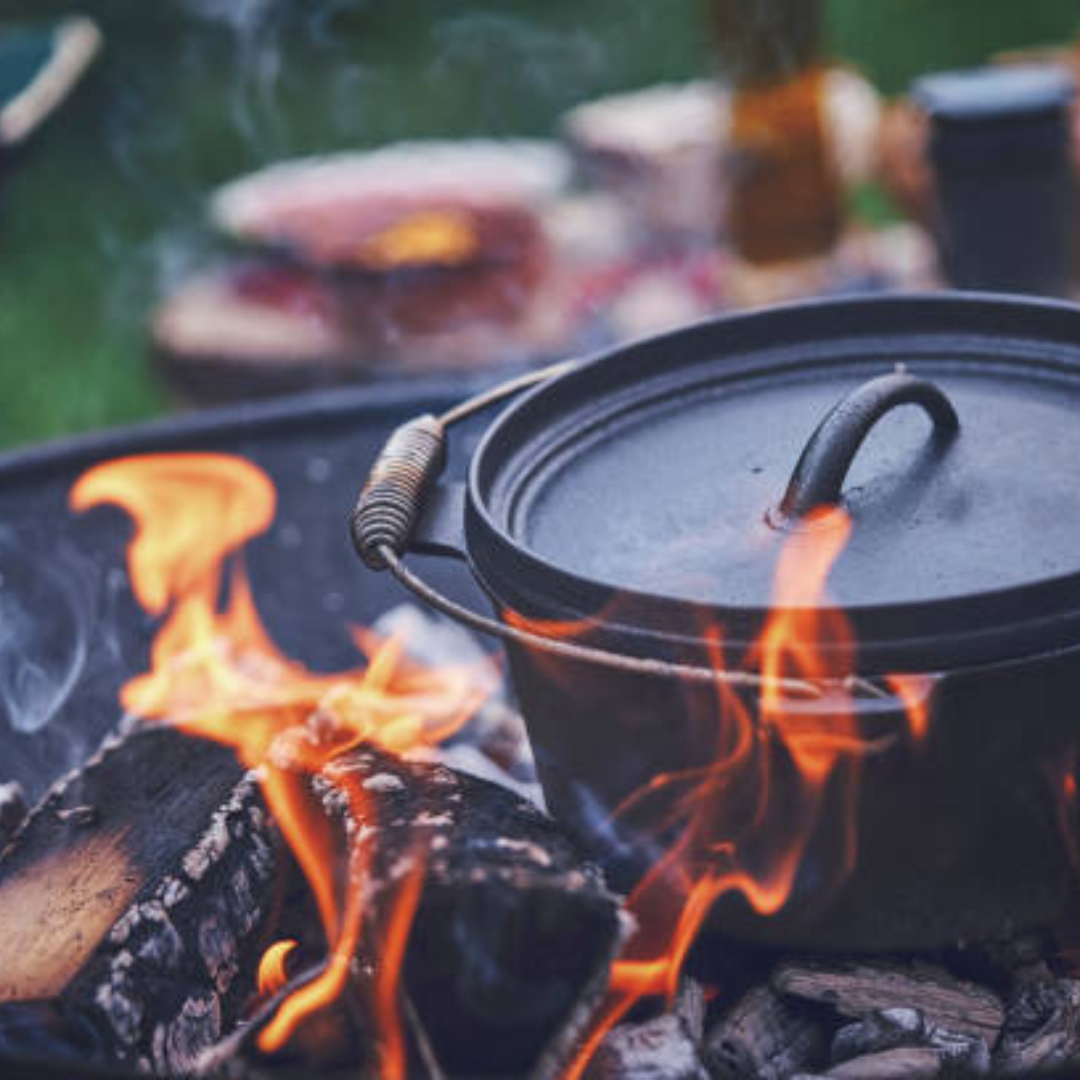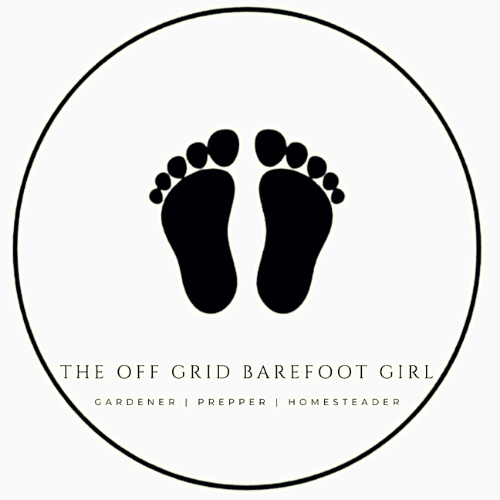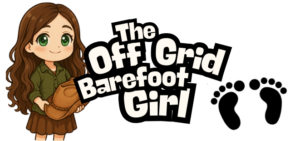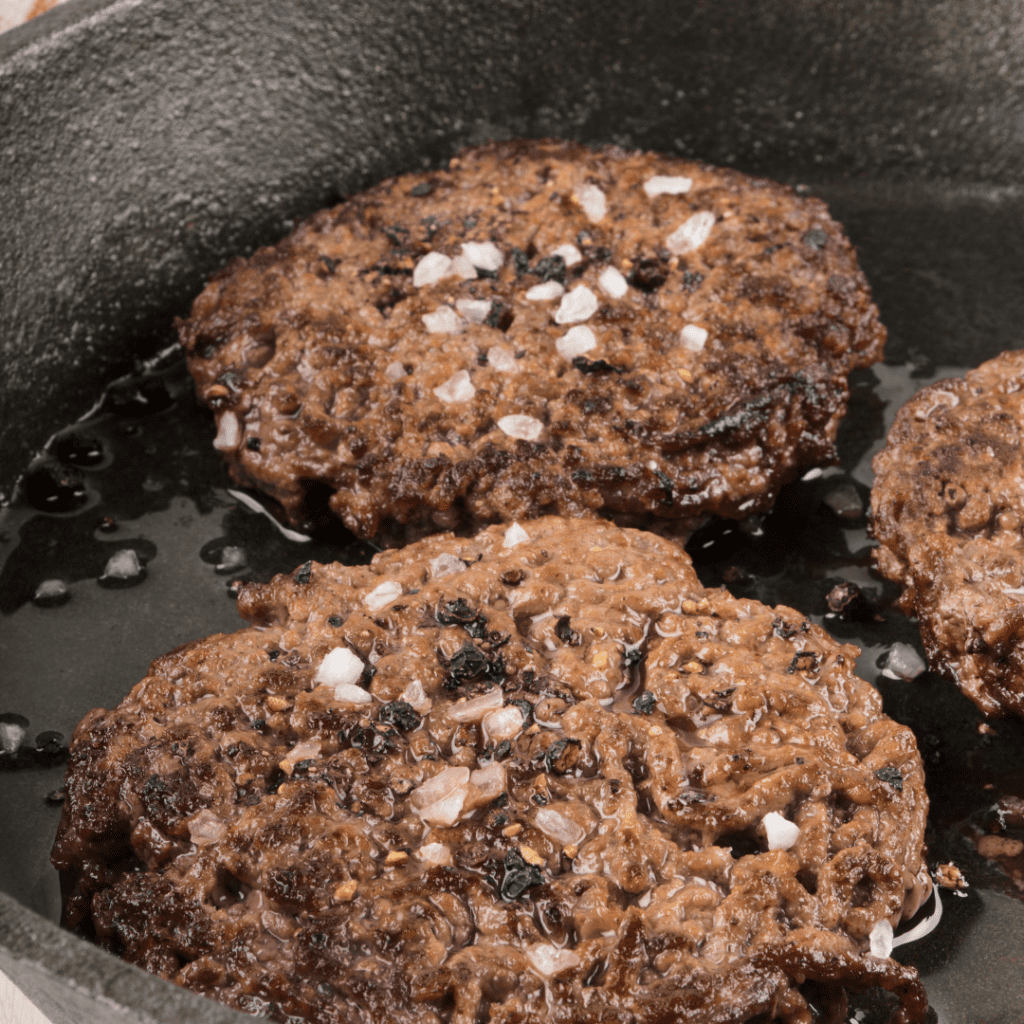Campfire cooking.
There’s nothing quite like the crackling fire, the smoky aroma, and the mouthwatering flavors of a meal cooked over an open campfire. Whether you’re a seasoned camper or a weekend warrior, mastering the art of campfire cooking can elevate your outdoor adventures to new heights of deliciousness.
Imagine being able to whip up a gourmet meal in the heart of nature, surrounded by the serenity of the great outdoors. No more settling for bland, uninspired campfire fare – with the right tools and techniques, you can transform even the simplest ingredients into culinary masterpieces.
In this comprehensive guide, I’ll be discussing campfire cooking and exploring the best stoves, kits, meal plans, and recipes to tantalize your taste buds. From compact and portable setups to gourmet cast-iron cookware, I’ve got you covered. But that’s not all – I’ll also share insider tips and tricks to ensure your campfire cooking experience is a sizzling success, every single time.
So, grab your hiking boots, fire up your adventurous spirit, and get ready to elevate your outdoor dining game. Whether you’re a novice or a seasoned pro, this guide will equip you with the knowledge and tools to become a true campfire cooking master!
This is a pinnable post. Tap or hover over any image in this post to pin to your Pinterest Boards.
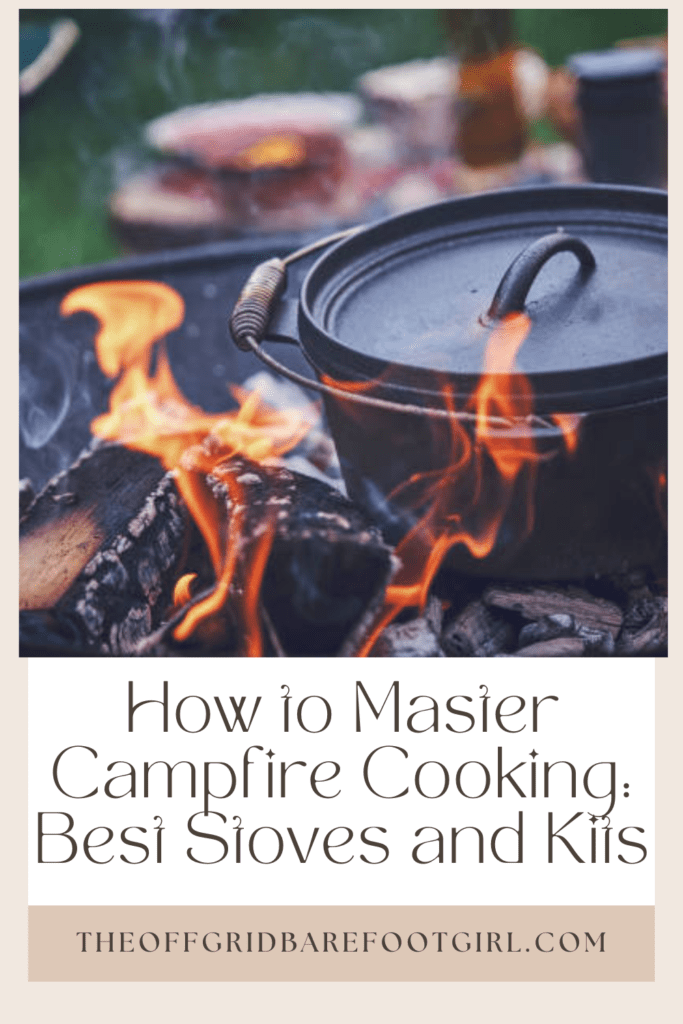
The Basics of Campfire Cooking
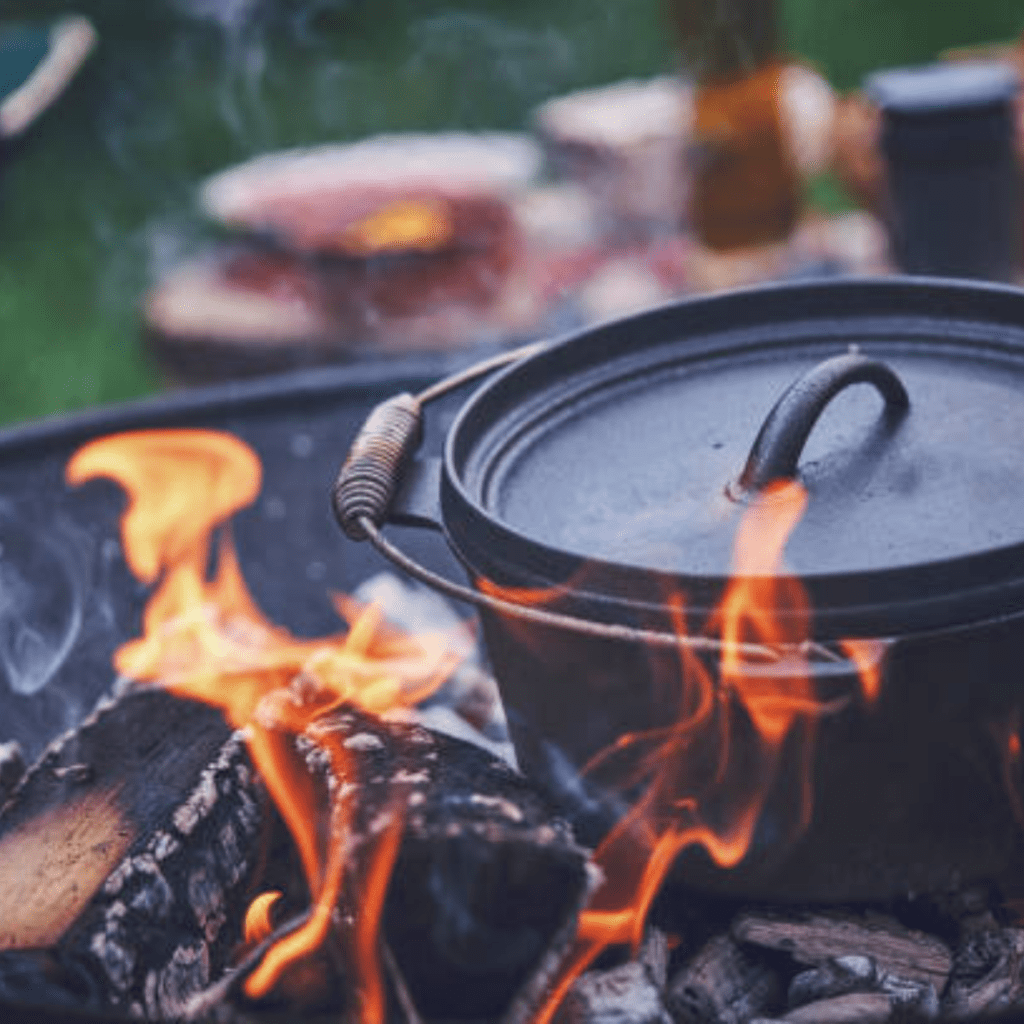
Cooking outdoors over an open flame is an age-old tradition that has been enjoyed by campers, hikers, and outdoor enthusiasts for generations. Campfire cooking is a unique and rewarding experience that allows you to reconnect with nature while preparing delicious meals in the great outdoors.
What is Campfire Cooking?
Campfire cooking is the art of preparing food over an open fire or campfire. It involves using basic cooking equipment, such as pots, pans, and grills, to cook a variety of dishes, from simple campfire snacks to elaborate outdoor feasts. The key to successful campfire cooking lies in mastering the art of fire management, understanding the different cooking techniques, and having the right gear.
Benefits of Campfire Cooking
Campfire cooking offers several benefits that make it an appealing choice for outdoor enthusiasts:
- Reconnecting with Nature: Cooking over an open fire allows you to immerse yourself in the natural surroundings, creating a deeper appreciation for the great outdoors.
- Simplicity: Campfire cooking requires minimal equipment and ingredients, promoting a back-to-basics approach to cooking and dining.
- Flavor: The smoky aroma and unique flavors imparted by the campfire lend a distinct and delicious taste to your meals.
- Bonding Experience: Gathering around the campfire to cook and share a meal can be a fantastic way to bond with family and friends, creating lasting memories.
Essential Gear for Campfire Cooking
To get ready for your campfire cooking adventure, it’s essential to have the right gear. Here are some essential items you’ll need:
- Campfire Ring or Pit: A designated area for building and containing your campfire safely.
- Cooking Grate or Tripod: A sturdy grate or tripod that can be placed over the fire to support your pots and pans.
- Cast Iron Cookware: Cast iron pots, pans, and Dutch ovens are ideal for campfire cooking as they retain heat well and can be used directly on the fire.
- Utensils: Long-handled tongs, spatulas, and forks are essential for safely handling food over the fire.
- Cooler: A well-insulated cooler is necessary for keeping perishable ingredients fresh and preventing spoilage.
- Water and Soap: Bring enough water and biodegradable soap to clean dishes and hands after cooking.
With the right gear and a little practice, you’ll be well on your way to mastering the art of campfire cooking. Whether you’re whipping up a simple one-pot meal or attempting a more elaborate outdoor feast, the experience of cooking over an open flame is sure to create lasting memories and a deeper appreciation for the great outdoors.
Best Campfire Stoves
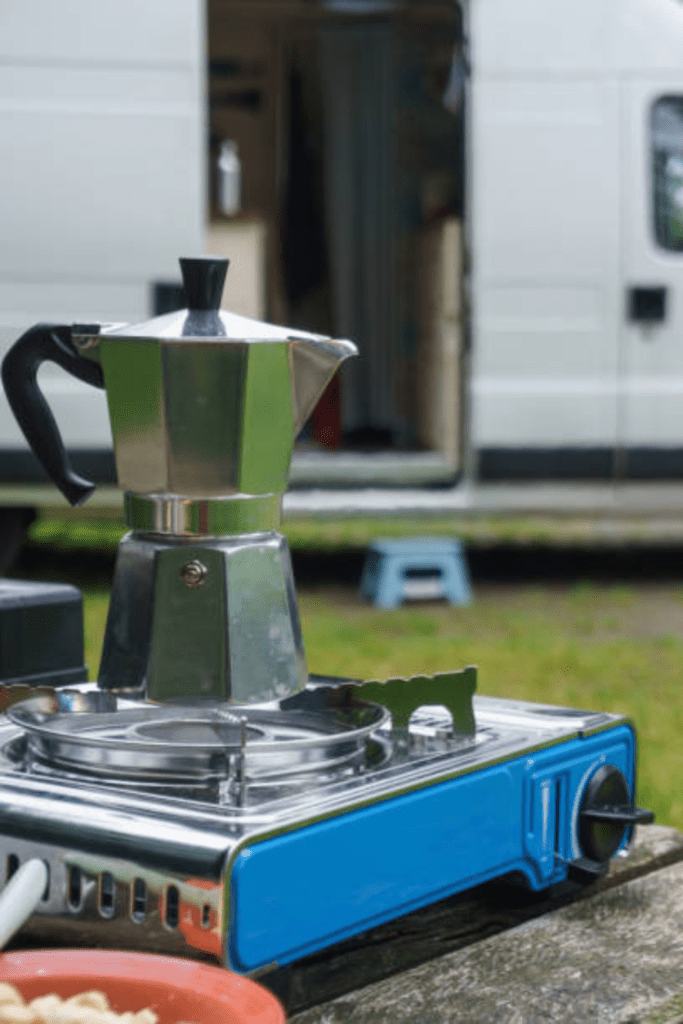
When it comes to campfire cooking, having the right stove can make all the difference. Whether you’re a seasoned outdoorsman or a weekend warrior, finding the perfect stove for your needs is crucial. In this section, I’ll explore three popular options: portable propane stoves, wood-burning stoves, and alcohol stoves.
Portable Propane Stoves
- Portable propane stoves are a favorite among campers for their convenience and versatility.
- These compact stoves use small, refillable propane canisters as fuel, making them easy to transport and set up.
- They offer precise temperature control and consistent heat output, which is ideal for cooking delicate dishes or boiling water quickly.
- Popular brands like Coleman and Camp Chef offer a wide range of propane stove models, from single-burner units to multi-burner setups with additional features like griddles or grills.
Portable Wood-Burning Stoves
- For those who prefer a more traditional camping experience, wood-burning stoves are an excellent choice.
- These stoves use readily available fuel sources like twigs, sticks, and small logs, making them a sustainable and eco-friendly option.
- They provide a cozy ambiance and can double as a heat source for your campsite.
- However, wood-burning stoves require more effort in terms of gathering fuel and tending the fire.
- They also produce smoke, which may not be suitable for certain environments or regulations.
Alcohol Stoves
- Alcohol stoves, also known as spirit burners or gel fuel stoves, are a lightweight and compact alternative for backpackers or those who prioritize minimalist camping.
- These stoves burn denatured alcohol or gel fuel, which is readily available and relatively inexpensive.
- They are easy to use and pack down to a small size, making them ideal for long-distance hiking or ultralight camping.
- However, alcohol stoves may not provide as much heat output as propane or wood-burning stoves, limiting their cooking capabilities.
No matter which stove you choose, safety should always be a top priority. Follow the manufacturer’s instructions carefully, and never leave a lit stove unattended. With the right stove and a little practice, you’ll be well on your way to mastering the art of campfire cooking.
Top Campfire Cooking Kits
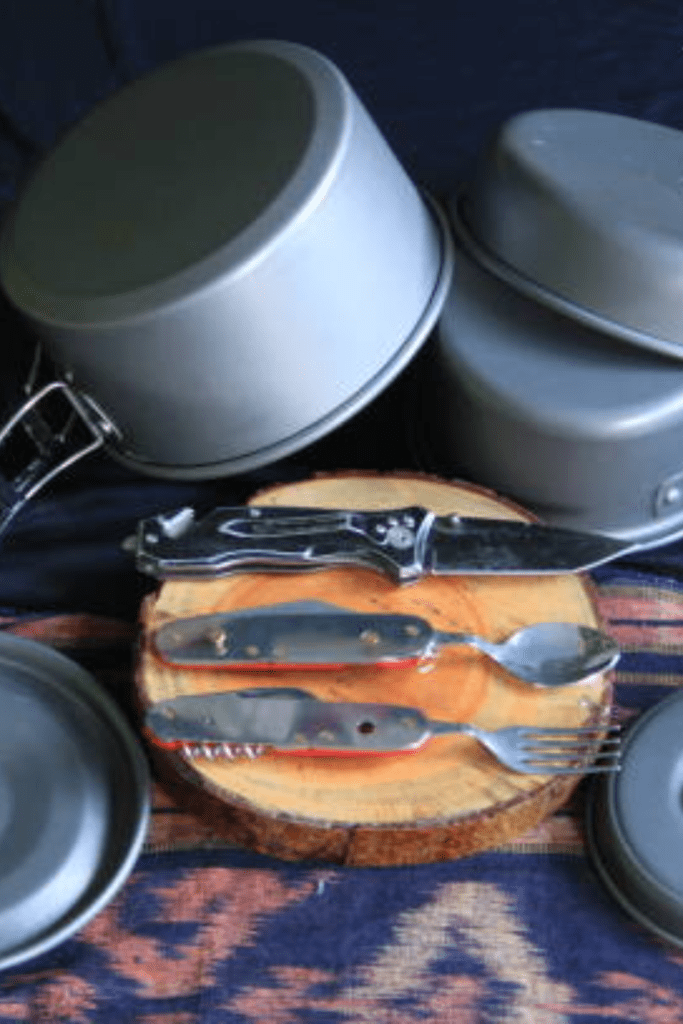
When it comes to outdoor cooking, having the right gear can make all the difference. Whether you’re a seasoned camper or a newbie to the great outdoors, a well-equipped campfire cooking kit is essential. In this section, I’ll explore the top options to help you master campfire cuisine like a pro.
All-in-One Kits
- For convenience and versatility, all-in-one kits are hard to beat.
- These comprehensive sets typically include a variety of pots, pans, utensils, and other essentials, all neatly packed into a compact carrying case.
- Some popular options include the GSI Outdoors Pioneer Set and the Stanley Adventure Camp Cook Set.
- With everything you need in one convenient package, these kits are perfect for hassle-free camping trips.
Mess Kit Essentials
- If you’re looking for a more minimalist approach, a mess kit might be the way to go.
- These compact sets usually include a bowl, cup, and utensils – the bare essentials for enjoying a hot meal in the wilderness.
- The Overmont Mess Kit and the Vango Camping Cookset are excellent choices that prioritize portability and simplicity.
Cooking Utensil Sets
- For those who already have their pots and pans covered, a dedicated cooking utensil set can be a game-changer.
- These sets typically include spatulas, tongs, ladles, and other tools specifically designed for campfire cooking.
- The GSI Outdoors Destination Kitchen Set and the Primus Campfire Cookset are great options that offer a wide range of specialized utensils to elevate your outdoor culinary experience.
No matter which type of kit you choose, the key is to find one that suits your specific needs and cooking style. With the right gear in hand, you’ll be well on your way to mastering the art of campfire cooking and creating delicious meals in the great outdoors.
Meal Planning and Recipes
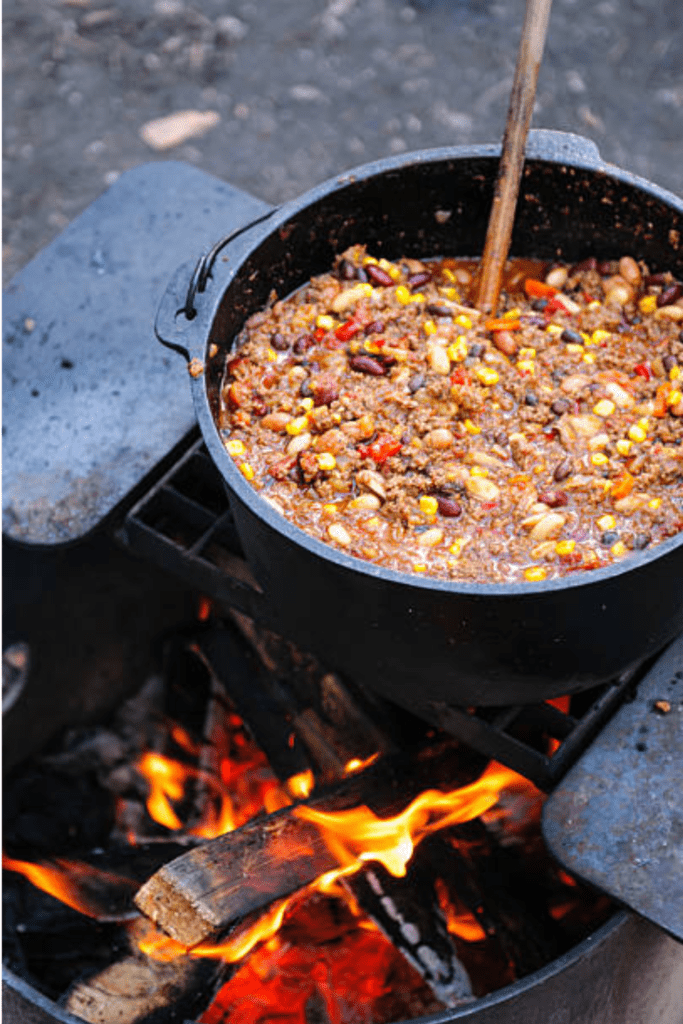
Campfire cooking is not just about the gear; it’s also about the delicious meals you can create outdoors. Proper meal planning and having a few go-to recipes can make all the difference in your camping experience. Let’s explore some tasty ideas for breakfast, lunch, and dinner around the campfire.
Breakfast Ideas for Campfire Cooking
Start your day off right with these simple yet satisfying campfire breakfast options:
- Campfire Breakfast Sandwich: Fry up some eggs, bacon, and cheese, then sandwich it between two slices of bread or an English muffin.
- Campfire Hash: Diced potatoes, onions, peppers, and your favorite protein (bacon, sausage, or ham) cooked together in a cast-iron skillet.
- Dutch Oven Frittata: Whisk eggs with veggies, cheese, and seasonings, then bake in a Dutch oven over the campfire coals.
Quick and Easy Campfire Lunches
When you’re on the go or need a quick refuel, these campfire lunch ideas are perfect:
- Grilled Sandwiches: Pack your favorite fillings between two slices of bread and grill them over the fire using a pie iron or sandwich press.
- Foil Packet Meals: Wrap ingredients like proteins, veggies, and seasonings in foil and cook them directly on the coals or grill grate.
- Campfire Nachos: Layer tortilla chips, beans, cheese, salsa, and other toppings in a cast-iron skillet and heat until the cheese melts.
Hearty Campfire Dinners
After a long day of outdoor adventures, treat yourself to these filling campfire dinner options:
- Dutch Oven Stew or Chili: Slow-cook a hearty stew or chili packed with meat, beans, veggies, and spices in a Dutch oven over the campfire.
- Campfire Kebabs: Thread chunks of meat, veggies, and even fruits onto skewers and grill them over the fire for a delicious and customizable meal.
- Foil-Wrapped Salmon or Trout: Season your favorite fish fillets with herbs and lemon, wrap them in foil, and cook them directly on the coals or grill grate.
Remember, proper meal planning and having a few tried-and-true recipes in your repertoire can elevate your campfire cooking experience. With a little preparation and creativity, you can enjoy delicious and satisfying meals in the great outdoors.
Tips and Tricks for Successful Campfire Cooking
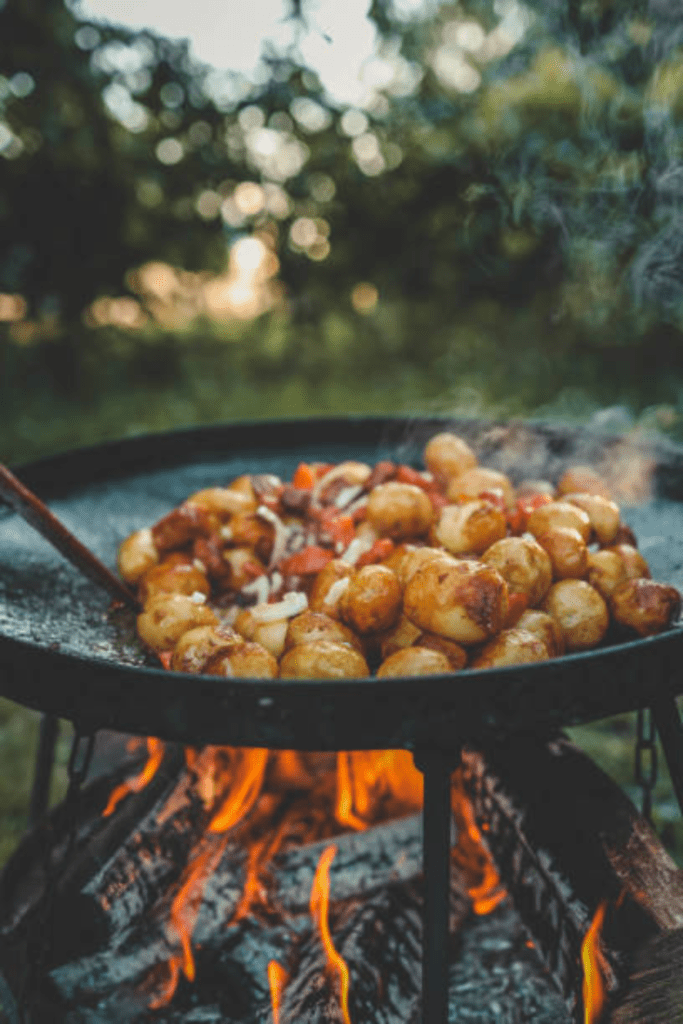
Cooking over an open fire can be both rewarding and challenging. To ensure a successful and enjoyable campfire cooking experience, it’s essential to follow some essential tips and tricks. In this section, I’ll explore fire safety and maintenance, cooking techniques and hacks, and proper cleaning and packing-up methods.
Fire Safety and Maintenance
Safety should always be the top priority when dealing with open flames. Before starting a campfire, ensure that you have a designated fire pit or a safe, cleared area away from overhanging branches or dry vegetation. Keep a water source or a fire extinguisher nearby in case of emergencies. Regularly maintain your fire by adding fuel gradually and using a poker to adjust the logs. Never leave a fire unattended, and make sure it’s completely extinguished before leaving the area. If you are bringing kids along, I have written a post on campfire safety for kids for your convenience.
Ultimate Guide on Campfire Safety for Kids
Cooking Techniques and Hacks
Campfire cooking requires a bit of creativity and resourcefulness. One useful technique is to create different heat zones within the fire by arranging the logs strategically. This allows you to cook at varying temperatures simultaneously. Utilize tools like cast-iron skillets, Dutch ovens, and campfire tripods to expand your cooking options. Experiment with foil packet cooking or skewers for easy and versatile meal preparation.
Additionally, pre-cooking ingredients at home can save time and effort at the campsite. Consider marinating meats or preparing sauces in advance to infuse your dishes with extra flavor.
Cleaning and Packing Up
After a delicious campfire meal, it’s crucial to clean up properly. Bring biodegradable soap and a scrub pad to wash dishes and utensils. Strain and pack out any food waste or leftovers to avoid attracting wildlife. When breaking camp, douse the fire thoroughly with water and stir the ashes to ensure it’s completely extinguished. Leave no trace by packing out all trash and restoring the area to its natural state.
Campfire cooking can be a rewarding and memorable experience with the right preparation, techniques, and respect for the great outdoors. By following these tips and tricks, you’ll be well on your way to mastering this age-old culinary art.
Conclusion
Mastering campfire cooking is an adventure that combines the great outdoors with delicious meals shared among friends and family. Throughout this post, we explored the basics of cooking over an open flame, from selecting the best stoves and kits to meal planning and essential tips for success. By understanding the fundamentals and equipping yourself with the right tools, you can elevate your camping culinary experience to new heights.
As you set out on your next outdoor adventure, remember to plan ahead, pack smart, and embrace the joy of cooking amidst nature’s beauty. Don’t be afraid to experiment with new recipes and techniques, as half the fun lies in the process itself. Embrace the challenges and cherish the moments, for they will create lasting memories around the campfire.
So, gather your gear, ignite your passion for outdoor cooking, and let the flames guide you toward unforgettable culinary adventures. The great outdoors awaits, and with the knowledge you’ve gained, you’re ready to master the art of campfire cooking and savor every moment under the stars!
For further information on choosing the best cooking kit for your outdoor adventure, I have written more comprehensive posts with more tips and information.
- Choosing the Best Survival Cooking Kit: The Ultimate Guide
- Get These Vital Emergency Survival Equipment Now!
- How to Season Cast Iron for Cooking
- The Ultimate Camping Gear Checklist: Everything You Need for an Adventure
- How to Make Dutch Oven Lasagna
Resources: Here are some helpful resources for further information.
- Over the Fire Cooking Recipes – By Over the Fire Cooking (my favorite blog for campfire recipes! Subscribe to his blog because you will love the recipes!)
- 49 Mouth-Watering Campfire Recipes to Try On Your Next Camping Trip – By Fresh Off the Grid (another favorite blog of mine for campfire cooking! Subscribe to them too!)
- Campfire Cooking: Master Campfires – By Wanderland Camping
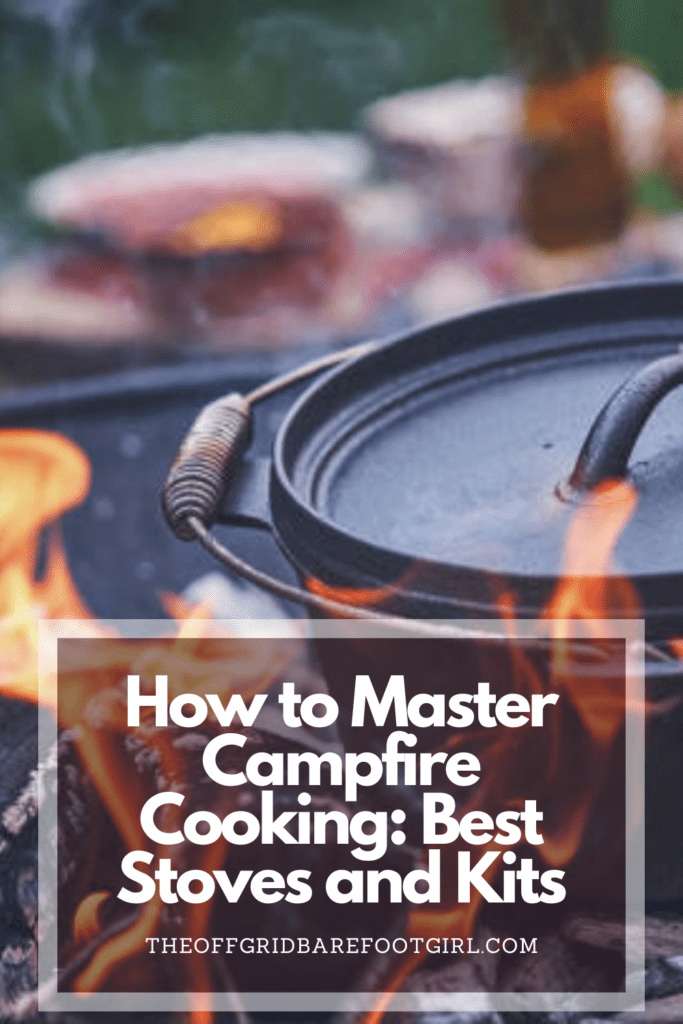
Frequently Asked Questions
1. What are the essential features to look for in a campfire cooking stove?
When choosing a campfire cooking stove, consider these essential features:
- Portability: Look for lightweight and compact designs for easy transport.
- Fuel Type: Options include propane, butane, liquid fuel, or wood. Choose based on availability and convenience.
- Burner Efficiency: Ensure the stove has efficient burners that provide even heat distribution.
- Durability: Opt for stoves made from sturdy materials like stainless steel or cast iron to withstand outdoor conditions.
- Ease of Use: Simple setup and ignition systems can make cooking more straightforward, especially in the wilderness.
2. What are some top-rated campfire cooking stoves and kits?
Some highly recommended campfire cooking stoves and kits include:
- Jetboil Flash Camping Stove: Known for its fast boiling time and compact design.
- MSR PocketRocket 2: A lightweight and reliable option, perfect for backpacking.
- Coleman Classic Propane Stove: A sturdy, two-burner stove ideal for family camping trips.
- BioLite CampStove 2: Uses wood as fuel and generates electricity, which is excellent for eco-conscious campers.
- GSI Outdoors Pinnacle Camper Cookset: A comprehensive kit that includes pots, pans, and utensils, which is great for group cooking.
3. How can I ensure safety while using a campfire cooking stove?
To ensure safety while using a campfire cooking stove, follow these tips:
- Stable Surface: Place the stove on a flat, stable surface to prevent tipping.
- Ventilation: Use the stove in a well-ventilated area to avoid carbon monoxide buildup.
- Fuel Handling: Handle fuel carefully, and store it away from open flames and heat sources.
- Fire Extinguishing: Always have a method to extinguish fires, such as water or a fire extinguisher, nearby.
- Supervision: Never leave the stove unattended while it’s in use.
4. What are some useful tips for cooking meals over a campfire?
Here are some tips for successful campfire cooking:
- Pre-Preparation: Prep ingredients and marinate meats at home to save time and reduce mess.
- Temperature Control: Use a mix of direct and indirect heat zones by arranging coals and flames.
- Cast Iron Cookware: Invest in cast iron pots and pans for even heating and durability.
- Foil Packs: Use aluminum foil packs for easy, versatile cooking and quick cleanup.
- Cooking Tools: Bring essential tools like tongs, spatula, and heat-resistant gloves for safe and efficient cooking.
Summary
I hope I have inspired you to do some campfire cooking to enjoy and share with your friends and family.
If you were encouraged by this post, I invite you to check out my FREE Printables Page for fun free printables, planners, and charts.
ENTER MY FREE Printables Page HERE
Here are some more of my cast iron cooking inspiration posts to check out!
How to Make Red, White, and Boom Cobbler
How to Make Sourdough Chocolate Cake
Old Fashioned Blueberry Cobbler: Easy Recipe for Beginners!
Shoofly Pie Recipe: The Best Pantry Staple Dessert!
The Best Old-Fashioned Homemade Brownies: A Cast Iron Skillet Recipe!
How to Make Dutch Oven Lasagna
How to Make Black Bean Burgers from the Garden!
Blessings,
The Off Grid Barefoot Girl

